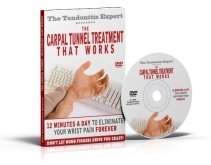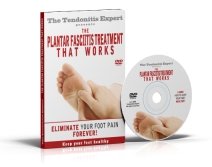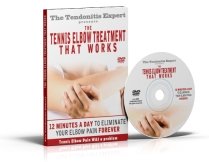Healthy Eating Guidelines
Healthy Eating Guidelines for staying Tendonitis-free, strong, and healthy!
Food and the nutrition it does, or doesn't, provide has a huge impact on our short term and long term structural health and fitness.
We all assume we're full of nutrition because there's plentiful food everywhere around us. But in reality, such is not the case. Some food we find on the shelves is good for us. Most of it is not. It might taste good, but it isn't nutritionally dense.
If you have chronic pain or chronic illness, or you suffer from a Tendonitis related issue, then these healthy eating guidelines are for you.
Healthy Eating Guidelines
Real Food
If you eat foods that provide poor nutrition, and if you eat foods that actually -steal- nutrition, then your body will slowly, over time, become less and less healthy, and less and less structurally strong.
The weaker your connective tissue and other physical structures are, the more at risk you are for getting Tendonitis.
If you want to be sure that you're eating 'good' food to keep your body literally strong, then eat REAL FOOD.
Real food is just that. Real food. It hasn't been messed with.
Food like our ancestors would have eaten.
In the context of eating healthy, keeping your tendons and muscles and everything else healthy and strong, here are some general healthy eating guidelines to consider.
First the Do's, then the Don'ts
Eat Organic
Eat foods that aren't laden with poisonous, toxic pestacides and fungicides. Crops are sprayed, and the toxins are absorbed into the food.
Mass produced eggs come from chickens pumped full of antibiotics and fed a non-nutrient filled diet.
Beef and chicken and pig (meats) are factory farmed the same way: overcrowded, fed poor food, pumped full of antibiotics and hormones, etc.
Eat organic meat or you'll be eating all the poisons they were given.
Obviously poison in your body is bad. But you feel ok, right?
Well, sure, but. In the long run, these toxins build up in your body, leading to cancer, obesity, and a whole host of other illnesses and diseases.
The cleaner you can keep your body, the less work your body has to do to fight off all those negative factors.
Eat Cultured and/or Fermented food
Cultured butter, kefir, sauerkraut, beeterkraut (sauerkraut made with beets, I made up the name myself!) beet kvass, and kombucha.
Don't know what those are? Look them up and find out.
Mmmm, kombucha.
Cultured, and/or fermented food means that live culture in the food grow and make various nutritional changes.
Yogurt is 'good for you' because it has live culture in it.
Raw milk is good for you because it has live culture in it (that eat the lactose)
Kombucha is good for you because it is full of live probiotic culture.
Sauerkraut is good for you because it is full of live probiotic culture.
Soy is a big issue too. Historically, soy was only eaten as a fermented food. The fermentation process does lots of good things to soy.
All the soy products you see the mainstream eating now are not fermented. This results in all sorts of problems including estrogen issues from the unfermented soy.
Eat Raw Foods
Raw milk, raw butter, raw nuts, raw sauerkraut, raw yogurt.
Technically you could eat raw meat, but I'll only do that with Sushi. In my world, meat is supposed to be cooked and tastes better that way. Plus, meat has worms and bad bugs in it that you WANT to cook and kill.
With raw milk, in comparison, that's not the case at all.
Raw means NOT PASTEURIZED.
Avoid pasteurization
When you pasteurize something like milk, you kill all the good, probiotic bacteria, and you damage other factors in the food.
Then what are you eating? Dead and possibly damaged food.
Raw milk is a huge conversation in and of itself that doesn't fit here. But I will say that I LOVE raw milk. It's nutritionally dense, and -feels- like food.
Store bought pasteurized and homogenized milk...I avoid it as much as possible. If for no other reason, mass produced milk is undrinkable without pasteurization to kill all the bad bacteria, pus, etc that's in the unhealthy cows, and drinking that just doesn't sound like a good idea to me.
Avoid processed foods
Real Food means foods that have not been processed. Processing takes nutrients out, and then some companies are kind enough to put a -few- nutrients back in. The FDA calls it 'fortified'.
Breakfast cereals? Sugar cereals? Don't even bother. NOT included in these healthy eating guidelines.
Milk has been pasteurized and homogenized. This damages and kills various factors in the milk. And that milk is coming from cows heavily dosed with antibiotics and hormones and over-milked, and much the food they are given is questionable.
White flour...oh my. Not only is Gluten an inflammatory agent, but flour is only white if your process it down so much that you strip all the nutrition out of it. Then you 'fortify' it and sell it to the masses as 'healthy' food.
Sugar. The great white devil. Avoid sugar as much as possible. It's bad, bad, bad. I won't go into it here, but avoid it at all costs. (Except around the holidays, of course!)
That's just a small example of 'bad' foods.
The point is, eating processed food robs you of vital nutrition (as well as taking in all those antibiotics and hormones and such).
Healthy Eating Guidelines
Foods To Eat
So what do you eat if you want the most nutrition and the least amount of bad stuff going down your gullet?
My healthy eating guidelines say: All organic (if possible)!
* Lightly steamed/cooked vegetables.
* Raw fruits.
* Organic meats. This includes organ meats, and as much connective tissue as possible. We just eat the steak cuts these days, which means that we're missing lots of nutrition filled connective tissue/tendon/ligament/cartilage. Read about Bone Broth as the best Tendon Supplements. Eat lean meat and fatty meat.
*Sprouted grains (stay away from anything with Gluten if at all possible. Gluten is an inflammatory agent.)
*Fat. Yeah baby, fat!
For more information on what specific Healthy Foods To Eat, click here.
Healthy Eating Guidlines
Fat. And Lots Of It
Fat deserves a section all to itself.
Fat has been villainized over the last several decades.
I grew up on a farm with all sorts of animals and a freezer full of meat. Then one day dad got his cholesterol checked, and bye bye went all the animals, much of the meat, and eggs.
Ten years of suffering on a low fat diet, his cholesterol continued to go up.
Then he switched to an Atkins style set of healthy eating guidelines. He lost 20 pounds and his cholesterol went down, his triglycerides went down, his blood sugar levels went down. And he was happy, because he could have bacon and eggs again for breakfast.
My point is, even though doctors like Dean Ornish believe in a low fat diet set of healthy eating guidelines, research and evidence proves that a high fat, low carb diet is overall healthier.
Did you know that eating wheat has a higher relation to heart attack that eating meat? By far. (Because wheat is an inflammatory agent, but fat is required for optimal body function.)
Eskimo's historically at nothing but meat and fat. They didn't have any conversation about healthy eating guidelines. They just ate what was available, which was meat and fat.
I eat a lot of fat, and a lot of protein, and not many carbs (I'm not strict, I just try to avoid).
It totally works for me. And medically, it's a very healing diet.
The medical industry does not believe that diabetes can be cured, but it totally can. How? By changing what you eat. (And exercise never hurt.
Raw whole milk. Raw cultured butter. Coconut oil. Coconut butter. Bone broth. Almonds. Lard. Lean and fatty meats.
Ironically, as a nation we're obese because of all the carbs we eat. We fear fat but gorge on all sorts of processed, nutrition-less, sugar filled.
Fats to avoid: Transfats, Canola oil, safflower, olive oil that's been sitting around on the shelf for more than a couple months, sunflower.
If it's sitting on a shelf, if it's in the light, if it's not refrigerated, then it's rancid. And several of them go bad at low cooking temperatures. Both meaning, carcinogens. Cancer causing. Canola oil is a bad, bad, bad cancer causer.
Note that Coconut Oil, however, is not in the above group. It's good, good, good.
Healthy Eating Guidelines
Find What Works For You
Finding healthy eating guidelines takes some trial and error.
You'll find your way.
But if you want to heal from a Tendonitis injury, then you need to make your body structurally strong.
Good fat is required to make strong cell walls.
Lots of good protein is required for all the building blocks to not only repair damaged tendon, but to keep the vast web of connective tissue that is your body strong, supple, and healthy.
Nutrition in the form of vitamins and minerals are important too. And if you're eating animals that were raised right, meaning free range, pastured, uncrowded, etc, then you'll be getting their good nutrition.
Still, I'm a fan of supplementation. I want my body to have as much of what it wants and needs as it wants and needs.
I'm pretty active, and I plan on being a sprite, strong, agile 95 year old. And you don't get that way eating twinkies.
Different people preach different 'healthy eating guidelines'. Vegan, vegetarian, low fat, low carb, etc. Ultimately you need to find which set of healthy eating guidelines you want to follow.
It's an experiment. Trial and error until you find what works for you. I've worked with vegans that continued to be vegan..and continued to have tendonitis pain. I'm not saying that veganism is bad, I'm just saying. The body needs the building blocks that it needs, and enough of them, to do what it needs to do.





